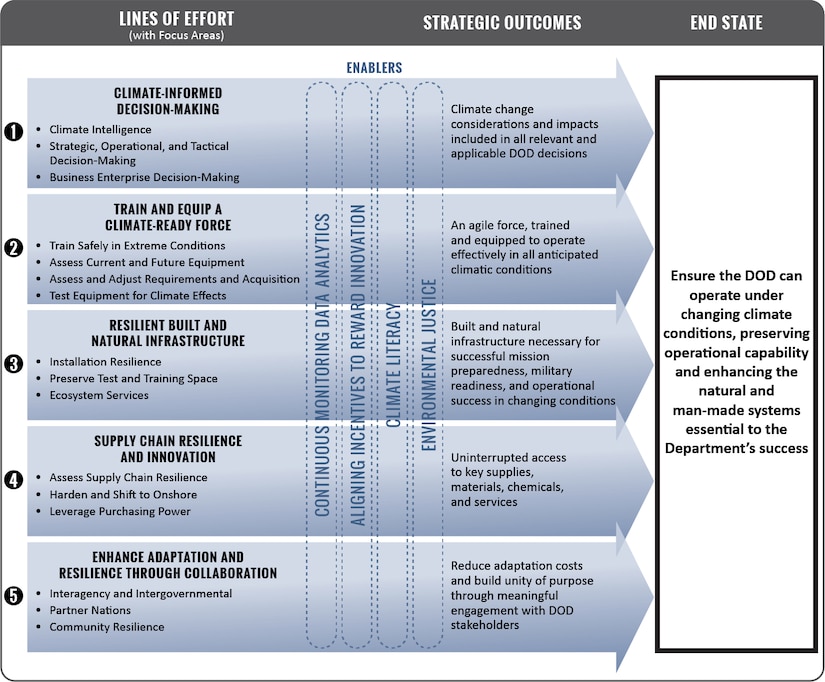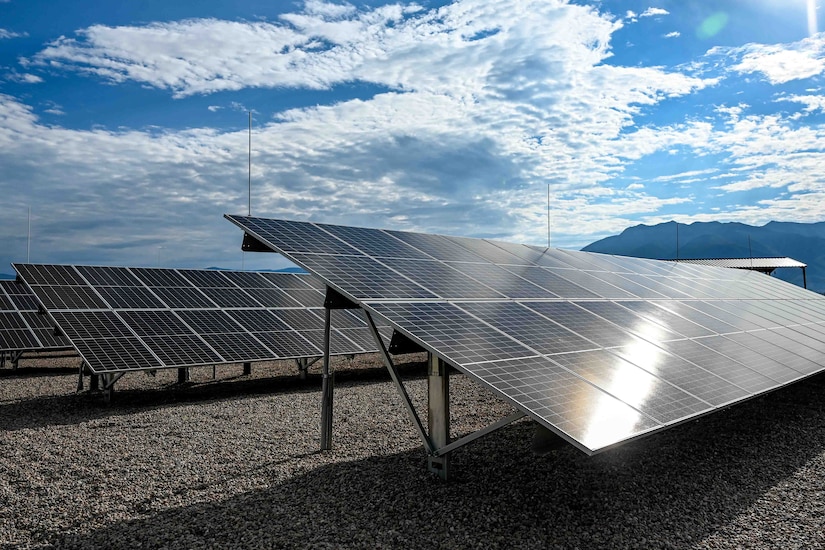On Oct. 7, 2021, the White House released Climate Adaptation Plans from each agency, as required by Executive Order 14008, "Tackling the Climate Crisis At Home and Abroad." The Department of Defense Climate Adaptation Plan, released with these plans, articulates a bold vision for climate adaptation and aligns adaptation and resilience efforts with the department's warfighting mission. The DOD CAP is the culmination of more than 10 years of effort within the department to ensure that the military forces of the United States retain operational advantage under all conditions.

DOD's Climate Adaptation Plan was approved by the Council on Environmental Quality and the Office of Management and Budget in June and signed by Secretary of Defense Lloyd J. Austin III on September 1, 2021. The DOD CAP lays out how operations, planning activities, business processes, and resource allocation decisions will include climate change considerations. No entity has the luxury of "opting out" of the effects of climate change, so no activity can "opt out" of the requirement to adapt to a changing climate.
DOD's Strategy to Tackle the Climate Crisis
DOD's efforts to "Ensure the Department of Defense can operate under changing climate conditions, preserving operational capability and enhancing the natural and man-made systems essential to the Department's success" are outlined in the strategic framework graphic below.

To achieve the DOD's strategic outcomes, the plan first centers the integration of climate-informed decision-making using actionable science into all department processes. All other actions in this plan are dependent on the outcomes of this effort.
Second, the DOD will train and equip a climate-ready force by focusing on operating under the most extreme and adverse conditions and integrating climate adaptation concepts into existing major exercises and contingency planning.

Third, the DOD will ensure built and natural infrastructure are in place for successful mission preparedness, military readiness and operational success in changing conditions and will leverage the Defense Climate Assessment Tool to develop comprehensive installation resilience plans.
Fourth, the DOD will insert climate change considerations into supply chain management to both reduce vulnerabilities and create opportunities to leverage the DOD's purchasing power to advance the key technologies essential to a clean energy transformation.

And finally, the DOD will enhance adaptation and resilience through collaboration. The DOD recognizes the value of interagency and intergovernmental cooperation in meeting the challenges of climate change and reflects our commitment to working closely with other agencies in this room as well as our defense partners around the globe.
Four cross-cutting enablers will allow these efforts to succeed:
Climate change is a destabilizing force in the world, creating new
missions and impacting the operational environment. Climate change can
affect sources of raw materials, supplies, equipment, vehicles and
weapons systems, as well as their distribution and storage. As DOD
responds, it is critical that training, testing and acquisitions, not
disproportionately impact low income and/or minority populations. The
DOD's environmental justice strategy includes environmental equity and
justice in department organizational structures, policies and
implementation guidance through inclusive and equitable climate
adaptation and resilience as well as in agile mission assurance.








No comments:
Post a Comment